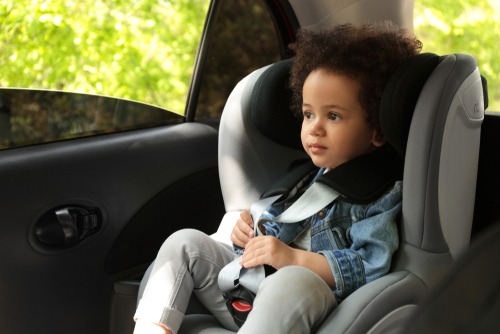
Child Passenger Safety Week
Child Passenger Safety Week 2014 is September 14-20, capped off by National Seat Check Saturday on September 20.
Due to their small size, children are at a uniquely high risk of being seriously injured in a car accident. In 2011, more than 650 children ages 12 and younger were killed in motor vehicle accidents, and more than 148,000 children were injured.
Unfortunately, many of these injuries and deaths are preventable. According to data from the Centers for Disease Control and Prevention, 33 percent of those injuries were to children who were not buckled. One CDC study found that more than 618,000 children ages 12 and under rode in cars without a booster seat, child safety seat, or seat belt every year.
Safety measures taken by parents are a big indicator of children’s safety. A CDC study found that 40 percent of children riding with unbuckled drivers are also unbuckled.
Speaking of preventable injuries, a large number of child passenger deaths are the result of driving under the influence. From 2001 to 2010, approximately 20 percent of child passenger deaths in the U.S. involved drunk driving. In more than half of child passenger deaths (65 percent), it was the child’s own driver that had been drinking. More than 60 percent of child passengers of drunk drivers were not buckled up at the time of the crash.
Using the right car seat or booster seat can significantly decrease the chance of child injury or death in the event of the crash. The most appropriate child seats per age level are:
- Birth to age 2: rear-facing car seat
- Ages 2-5: forward-facing car seat
- Age 5 until seat belts fit properly: booster seat
- Once a seat belt fits: seatbelt
It is important to take your child’s height and weight into account, rather than basing the car seat on age alone. Also, never let a child 12 or under sit in the front seat; active airbags can cause severe injuries, particularly if the child is in a rear-facing car seat. The middle of the backseat is the safest place in the vehicle for children to buckle up.
Only when a child is large enough for a seat belt to fit properly should you discontinue using the booster seat. A child should be approximately 57 inches tall before he or she is large enough to properly use a seatbelt. The lap belt should lay across the upper thighs (not the stomach) and the shoulder belt should lay across the chest (not the neck).
It is not enough to simply have the correct car seat—it must be used and secured correctly in order to be safe. One study found that 72 percent of nearly 3,500 observed car seats and booster seats were misused in a way that could increase a child’s risk of injury during a crash.
The goal of Child passenger Safety Week is to ensure all parents and caregivers are properly securing all children in the right car restraints for their ages and sizes. Certified Child Passenger Safety Technicians will be present in many communities to provide free education on using car seats, booster seats, and seat belts for children. Click here to find a child car seat inspection station near you.


















